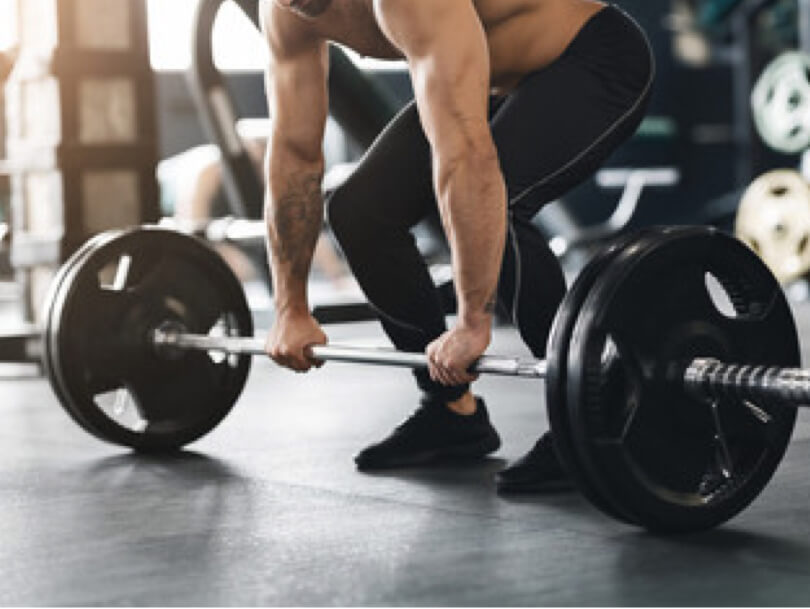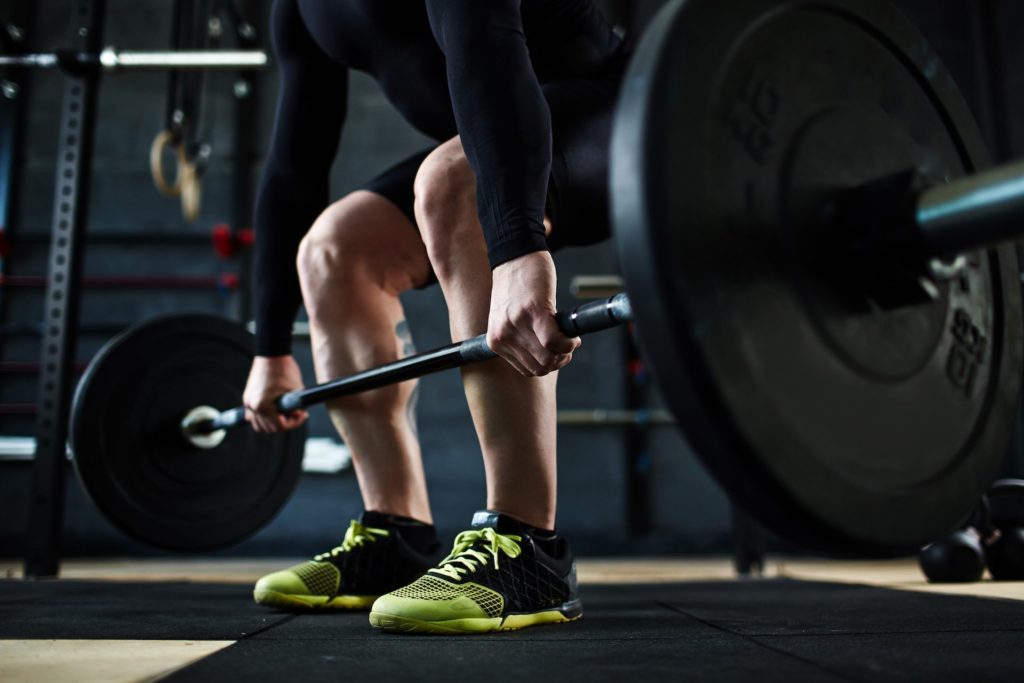The deadlift is a common weight training exercise, and part of that lies in its simplicity, given all you need to begin is a loaded barbell or weight, and your own strength. But there is another piece of equipment that is essential for a safe and effective deadlift regiment: deadlift shoes!
Here we will go over the benefits and reasons to use a specific and proper shoe for deadlifting.
Reasons to use proper deadlift shoes
There are numerous reasons to use shoes that you slip on specifically when you’re getting into your deadlifting routine for the day, and that is the added safety, effectiveness, and comfort that can be gained by selecting the right shoe.
The right footwear will provide cushion and support to your feet, and add a grip that helps keep you stable during deadlifting because of the tread style of the bottom of the shoe, which is essential for lowering the risk of injuries and accidents during training.

Without a proper grip, you may slip, slide, or risk falling and injuring yourself, and without proper support and cushioning in the right places, you risk adding strain and stress to your calves and feet by the shoes putting pressure in the wrong places.
This can cause painful complications such as stress fractures, sprains, and other aches and pains.
Not fun or helpful, and entirely preventable!
Lifting barefoot, that is, entirely without shoes, also brings similar problems, as the risk of injury from slips or falls remains a possibility, along with your feet being deprived of proper arch support.
Plus, many gyms don’t allow you to be barefoot in them, and if doing the lifting at your own home gym, unless you’re deadlifting on a surface such as a carpet, or another that makes it difficult or impossible to slide, having a shoe which keeps you stable is important.
Flatter shoe, distributing weight towards the heel
One of the ideal traits for deadlift shoes is the absence of a heel on the back, as even a smaller heel of a few inches can redistribute weight and pressure move unevenly to your body when lifting, primarily towards the knees and quad muscles, which can put additional strain on them, creating a risk of injury or sprains.
The lack of extra inches from the heel also benefits the wearer because that’s less height needed to move the barbell or weight, making the move less complicated and easier to perform.

Another important aspect is that shoes with heels alter the center of gravity of your body, which repositions your hips, so it puts more emphasis and strain on the back rather than the legs, which can create back problems and pain down the line.
The old-age advice about lifting with your legs definitely comes into play here, as it’s been found to generally be the safest and least straining method of lifting heavy objects for your body to use.
Heels from shoes such as squat shoes can also create a problem of making you off balance, which is the last thing you want to do while handling heavy weightlifting equipment!
Well fitted and snug
Properly fitting footwear is essential in all circumstances, be it for running, hiking, or any form of sports, and the same is true for when selecting deadlift shoes, as ensuring the right size and snug and firm fit is imperative for preventing injuries from sliding or slipping.

A recommendation is that there shouldn’t be more than an eighth of space between the shoe and your longest toe, as this ensures the shoe is tight and firmly fitting, but not without restricting blood flow or circulation.
Trying on several brands and styles, and seeing if the shoe feels better after being ‘broken in’ from regular use can help you decide if the shoe you chose is the right one for you.
Good grip by specific tread style
The outsole preferably should be made out of a rubber material that isn’t too thick, nor too thin, to offer proper grip strength, and support from the impacts of lifting, such as compression, without leaving you off balance from the height of the rubber outside being particularly thick.
Rubber is also very durable, so the majority of shoes made with the material tend to be built to last and stand up to harsh workouts, however, avoiding rubber that is hyper-flexible is advised given they lessen the amount of support they can give your feet.

Proper tread style is important as well, so look for a shoe with a good grip to enable you to keep better form and prevent accidents!
Support on the sides of the internals of the shoe
Good support is another essential trait for deadlift shoes, especially because so much of the weight your feet bear is on something called the metatarsal, which is an arch that goes across the ball of your feet.
They take a lot of regular load and impact from every day tasks such as walking or running, and the same is true when performing exercises such as the deadlift, so having a shoe that is properly made to support them and the other arches of your feet are imperative to prevent strains and stress fractures.
Flat outsole
As previously mentioned, flatter shoes are ideal for deadlifting, and this rings true for the outsole portion of the shoe as well, so, just like the front and back of the shoe, it’s important that the tread and outer areas are flat and have minimal rises.
This lessens slip risk and strain from having to put so much pressure on your feet when being weighed down during a heavy lift to push through all the firm support, as the shoe’s thickness and internals aren’t working against you.
Lateral and ankle straps
Many ideal deadlifting shoes are affixed with lateral/metatarsal straps which keep your feet snugly in place while offering the arches of your feet the proper support needed during weightlifting.
At least one per shoe is preferred, however, some brands have shoes with multiple straps across them, which is helpful for ensuring your feet stay in place, and once again, ideal for accident and fall prevention.

Some deadlift shoes have ankle straps that go over the inside and outside of the shoe, which offers support to the ankle joint and a tighter fit, which is always better when deciding on the right shoe.
Most don’t have both lateral and ankle straps, however, some of the pricier brands do, and sometimes spending a bit more can buy you a better product, so it’s worth taking into consideration if this is something that might benefit you or not.